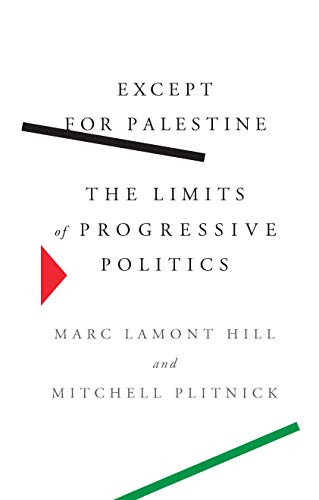A Man and a Motorcycle: How Hamid Karzai Came to Power, Bette Dam, Ipso Facto Publishers, 2014, pp. 236, ISBN: 978-90-77386-13-2
After the Taliban entered Kabul and Afghan President Ashraf Ghani fled the country, another national politician took center stage in calling for a peaceful transfer of power, even announcing the formation of a three-men coordination council to that end. Former President Hamid Karzai, standing with three of his daughters and struggling to make himself heard over the din of chaos outside the walls of his compound, emerged from the shadows to stage a comeback in national politics, possibly aiming for a role in Taliban-controlled Afghanistan. Ever the politician, Karzai managed relations with his allies and his enemies masterfully, always keeping them both close by relying on tribal connections, mutually beneficial exchange of favours and sometimes force.
Bette Dam’s book A Man and a Motorcycle tells the story of how Hamid Karzai came to power in 2001 by focusing on the long historical arch that led to his being picked to usher Afghanistan in the new post-Taliban world in 2001. His rise to power is a masterclass in political opportunism that exploited Afghan tribal relations and social carpentry to serve particular interests, pure luck and endless American support on the ground and financially. Karzai’s power rested on an unsustainable balance he created between himself and other prominent tribes, religious leaders and foreign powers. Much like Abdur Rahman in the 19th century, Karzai became a prisoner of his own power, having become enmeshed in a labyrinthine network of dependencies and fragile coalitions.
Taliban takeover of Afghanistan in 1994 found Karzai in Pakistan, in Quetta, where he moved after having resigned as Deputy Minister of Foreign Affairs on accusations of collaborating with Hizb-e Islami. Allegedly, it was Gulbuddin Hekmatyar who helped Karzai escape Afghanistan to Quetta. In Quetta, he used his father’s political standing as a former governor and a senate member to tap into the political ties he had with other tribes and leaders. Karzai became involved in Afghan politics in Pakistan, and knowing English, was used by foreign embassies to translate and interpret conversations between them and parties then engaged in fighting the Soviets. However, he also maintained ties with the Taliban in Afghanistan, as his father had supported them in 1994, hoping for a UN ambassadorial position for Hamid. As Bette Damn shows, Karzai was always close to power, navigating between rivalries and not taking any sides but exploiting enmities for personal gain.
For example, after Al-Qaeda bombed US interests in Africa and USS Cole in the late ’90s, it became clear that the US turned against the Taliban for having provided a safe haven for the terrorist group. Karzai brought a fellow tribesman from his province of Uruzgan to the US embassy in Islamabad and offered to fight the Taliban in their stronghold in the south, where the Northern Alliance, the most powerful opposition to the Taliban, had yet to penetrate from the North. Karzai also, controversially, approached Ahmed Shah Massoud for collaboration despite different ethnic composition and interests the Northern Alliance had compared to the Pashtuns of the South who traditionally ruled Afghanistan. There were others in Afghanistan who Karzai sought to contact, local and regional power being their main quality. Shuffling between war criminals in Afghanistan and foreign diplomatic missions in Pakistan, Karzai was always there, in the background, ready to pounce.
Karzai used these salesman qualities to build his power in Afghanistan. After 9/11, it became clear that the US will invade and depose the Taliban regime, creating a power vacuum and a potential opening for new leadership. Karzai jumped at the opportunity and quickly organized his supporters, members of his clan and their kin in Uruzgan to cross from Pakistan into southern Afghanistan. Having profiled himself as the man the US needed for an anti-Taliban front in Kandahar and Uruzgan, Karzai received material support from the CIA. Dolling out satellite telephones and cash, Karzai effectively bought his support. Loyalties in Afghanistan are never fixed, Bette Dam mentions, noting that “it’s the result, not political convictions, that counts.” Money, shifting loyalties and satellite phones allowed Karzai to cross into Afghanistan on a second-hand motorcycle purchased in the border town of Chaman.
Once in Afghanistan, Karzai began talking himself into power. While others fired the shots, including a squad of US commandos, sent explicitly to Karzai to help train his men to fight the Taliban, Karzai managed politics, talking to an ex-Taliban here, a Taliban governor there. The fascinating aspect of his rise to power was how much he successfully appropriated the sacrifices of others and hid the decisive impact of American support from the general public. After a few armed encounters with the Taliban, Karzai emerged as their main opposition in Kandahar and Uruzgan without firing a shot. US commandos called in airstrikes on Taliban convoys, clearing their way from the mountains of Uruzgan down to strategic towns of Tarin Kot and towards Kandahar. They called in weapons and food drops, distributing these among men whose loyalties Karzai managed to buy, again with American money. American support allowed Karzai to attract opportunistic allies who saw the American backers as their commitment to bring Karzai to power, who would have to repay their loyalties by sharing some of it.
Karzai’s collaboration with his ostensible enemies did have its benefits. Bette Dam recounts an episode where the Taliban co-founder Mullah Abdul Ghani Baradar sent emissaries to warn Karzai of a convoy of 50 to 500 Taliban heading his way, allowing him to escape. Incidentally, these collaborations could have led to amnesty and possible reintegration of former Taliban into society had they been organic and widespread, not simply favours at a personal level. This left large swathes of society angry and vindictive. Those with newly acquired powers used them to settle scores with ex-Taliban or other adversaries, exploiting American trigger happiness. One nomenclature was replaced with another, whose legitimacy was grounded in individual favours exchanged during the steady rise to power of Hamid Karzai. As Bette Damn notes, those individuals who helped him now staff embassies, governor’s mansions and hold other important positions even though nothing except their associations with Karzai qualifies them for the post. It was precisely this nepotism and network of patronage that plunged Afghanistan into another chaos.
Bette Dam’s account of Hamid Karzai’s rise to power reveals the flaws that marred and continue to stymie the development of Afghanistan. The book also explains why Hamid Karzai reappeared in the current crisis as a mediator between warring sides and someone who might assume the reigns again. With the Taliban’s push for international legitimacy, Karzai’s proximity to the West, and his ability to manage competing interests, one should not be surprised if Karzai reemerges as the old new face of Taliban-controlled Afghanistan.




